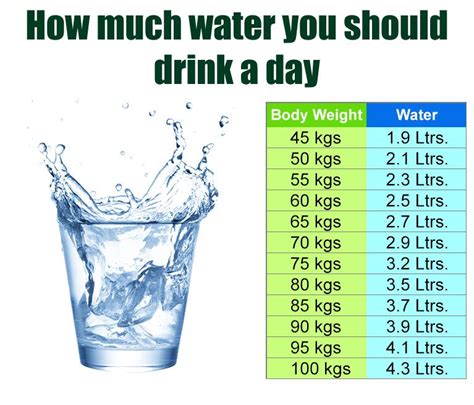How Much Is 2.5 Liters Of Water
Kalali
Mar 28, 2025 · 4 min read

Table of Contents
How Much is 2.5 Liters of Water? A Comprehensive Guide to Volume and Equivalents
Knowing how much 2.5 liters of water represents can be surprisingly useful in various contexts, from everyday hydration to understanding larger-scale water usage. This comprehensive guide explores the volume of 2.5 liters of water, providing equivalents in different units of measurement and offering practical examples to help you visualize and understand this quantity.
Understanding Liters as a Unit of Volume
Before diving into the specifics of 2.5 liters, let's establish a foundational understanding of liters as a unit of volume. A liter (L) is a metric unit of volume, commonly used to measure liquids. It's equivalent to one cubic decimeter (dm³), or 1000 cubic centimeters (cm³). This means a cube with sides of 10 centimeters each would hold exactly one liter of water.
Visualizing 2.5 Liters of Water
Imagine a standard 2-liter soda bottle. 2.5 liters is slightly more than that. It's roughly equivalent to:
- Slightly more than two 2-liter soda bottles. Adding a little over half of another 2-liter bottle to a full one will give you a good approximation.
- A little less than a standard gallon of water. A gallon is approximately 3.785 liters, so 2.5 liters is about two-thirds of a gallon.
- A medium-sized water cooler bottle. Many office water coolers contain 2.5 to 5 gallons of water, so a 2.5-liter bottle would represent a portion of a larger cooler.
These visuals help you connect the abstract quantity of 2.5 liters with tangible objects you encounter in everyday life.
2.5 Liters in Different Units of Measurement
Understanding 2.5 liters requires exploring its equivalents in various units:
Metric Units
-
Milliliters (mL): 1 liter equals 1000 milliliters. Therefore, 2.5 liters is equal to 2500 milliliters. This is often used in smaller contexts, like measuring medicine or smaller quantities of liquid.
-
Cubic centimeters (cm³): As mentioned earlier, 1 liter equals 1000 cm³. Hence, 2.5 liters equals 2500 cm³. This unit is useful when dealing with precise volumes, such as in scientific experiments.
-
Cubic decimeters (dm³): 1 liter is equivalent to 1 dm³. Therefore, 2.5 liters equals 2.5 dm³.
Imperial Units
Converting to imperial units provides a different perspective on the volume:
-
Gallons (gal): 1 gallon ≈ 3.785 liters. Therefore, 2.5 liters ≈ 0.66 gallons (approximately two-thirds of a gallon).
-
Quarts (qt): 1 quart ≈ 0.946 liters. Therefore, 2.5 liters ≈ 2.64 quarts.
-
Pints (pt): 1 pint ≈ 0.473 liters. Therefore, 2.5 liters ≈ 5.28 pints.
-
Fluid ounces (fl oz): 1 fluid ounce ≈ 0.0296 liters. Therefore, 2.5 liters ≈ 84.54 fluid ounces.
Understanding these equivalents allows for easy conversion and comparison across different measurement systems.
Practical Applications of Understanding 2.5 Liters
The knowledge of 2.5 liters' volume proves useful in diverse scenarios:
Daily Hydration
For adults, the recommended daily water intake varies depending on factors such as activity level, climate, and overall health. However, 2.5 liters represents a significant portion of daily fluid intake for many individuals. It's crucial to remember that total fluid intake also includes water from food and other beverages.
Cooking and Baking
Many recipes, especially those involving soups, stews, or sauces, use liters as a unit of measurement for liquids. Understanding 2.5 liters helps in precise measurement and accurate replication of recipes.
Gardening and Agriculture
Irrigation in gardening and agriculture often involves large volumes of water. Understanding 2.5 liters provides a reference point for smaller-scale irrigation needs, such as watering individual plants or small garden patches.
Scientific Experiments and Research
In scientific settings, precise measurement is paramount. 2.5 liters, easily converted to cubic centimeters or milliliters, allows for accurate measurements in various experiments involving liquids.
Filling Containers and Tanks
Whether it's filling a water cooler, a fish tank, or a storage container, understanding the volume of 2.5 liters allows for efficient and accurate filling of these containers.
Beyond the Measurement: The Importance of Water Conservation
While understanding the quantity of 2.5 liters is important for various applications, it's equally crucial to appreciate the importance of water conservation. Water is a precious resource, and its responsible use is vital for environmental sustainability and future generations. By understanding how much 2.5 liters represents, we can better appreciate the value of this essential resource and practice mindful water usage in our daily lives.
Conclusion: 2.5 Liters – A Versatile Measurement
In conclusion, 2.5 liters, although seemingly a simple quantity, holds significant implications across various fields. Whether it's determining daily hydration needs, following recipes accurately, or understanding larger-scale water usage, grasping its volume and equivalents in different units provides a practical understanding that extends beyond simple measurement. Coupled with an awareness of water conservation, this knowledge equips individuals to make informed decisions regarding water usage, leading to greater efficiency and environmental responsibility. From its approximate equivalency to slightly more than two 2-liter bottles to its precision in scientific experiments, 2.5 liters serves as a versatile unit with wide-ranging applications. Remember to always consider your individual needs and context when dealing with this volume of water.
Latest Posts
Latest Posts
-
9 5 Out Of 10 As A Percentage
Mar 31, 2025
-
128 Inches Is How Many Feet
Mar 31, 2025
-
What Is The Difference Between Frequency And Pitch
Mar 31, 2025
-
What Units Are Used To Measure Force
Mar 31, 2025
-
What Is The Percentage Of 7 Out Of 8
Mar 31, 2025
Related Post
Thank you for visiting our website which covers about How Much Is 2.5 Liters Of Water . We hope the information provided has been useful to you. Feel free to contact us if you have any questions or need further assistance. See you next time and don't miss to bookmark.
